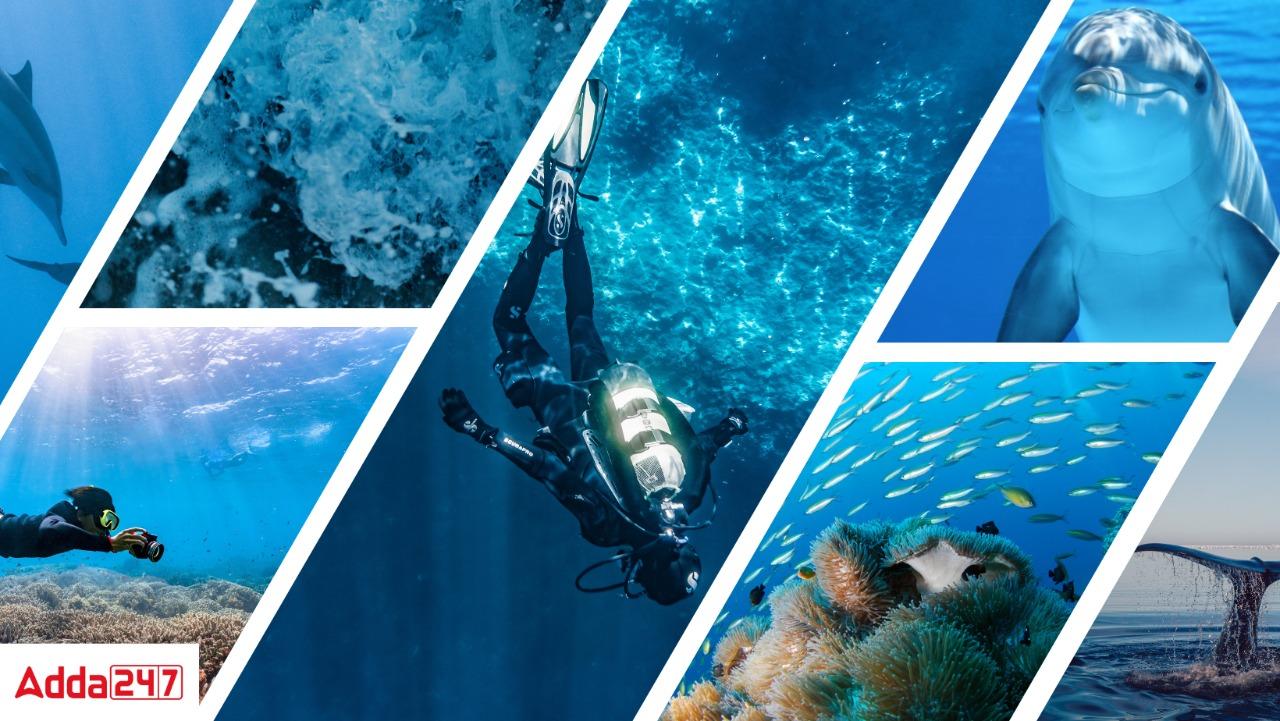Table of Contents
National Aquatic Animal Of India- Ganges River Dolphins
The Ganges River Dolphins (Platanista Gangetica) was officially discovered in 1801. The original stretches where the National Aquatic Animal of India are found:
- Ganges-Brahmaputra-Meghna River Systems and
- Karnaphuli-Sangu River Systems; of Nepal, India, and Bangladesh
Why is the Ganges Dolphin the National Aquatic Animal of India?
The reason to declare Ganges River Dolphin as the National Aquatic Animal of India was to save it from extinction. Also, the Ganges Dolphin is seen as the reflector of the health of the Ganga River. The declaration was made in 2009 in the National Ganga River Basin Authority’s (NGRBA) first meeting.
Facts about the National Aquatic Animal Of India Ganges River Dolphin
There are quite a few important and interesting facts about the Ganges River Dolphin. The table below mentions the relevant facts about the National Aquatic Animal of India:
| Interesting Facts about National Aquatic Animal of India – Ganges River Dolphin |
| Ganges River Dolphin is found only in freshwater |
| As the name goes, the Ganges Dolphin are endemic to the river Ganga |
| They are at the apex of the aquatic food chain |
| Ganges River Dolphin along with Indus River Dolphin is the sub-species of South Asian River Dolphin. |
| It is the official animal of the Assam’s capital Guwahati |
| There are also called Susu, Shushak, Side Swimming Dolphin & Blind Dolphin |
| Because of the sound, they make in the forms of whistles, these species of South Asian River Dolphin are also called Susu |
| It cannot breathe in the water, it being a mammal. It surfaces above the water every 30-40 seconds to breathe |
| Deep pools, eddy counter-currents located downstream of the convergence of rivers and of sharp meanders, and upstream and downstream of mid-channel islands are favoured by the Ganges River Dolphins |
| There is a Ganges Dolphin Sanctuary called Vikramshila Gangetic Dolphin Sanctuary in Bihar. Locals of Bihar called Gangetic Dolphin as ‘Soons’ |
| They use the way of ‘Echolocation’ to trap their prey |
| In the mythology of India, Dolphin is considered as the vehicle of Goddess Ganga |
| The population of Ganges River Dolphin is less than 1800, as quoted by WWF-India |
| The babies of Dolphins are called calves, and they are chocolate brownish when they are born and gradually the colour changes to grey |
| IUCN Red List of Threatened Species has given the status of ‘Endangered’ to the Ganges River Dolphin |
| The species is included in the Wildlife Protection Act 1972 – Schedule I. It makes it prohibited to be hunted throughout India, except under threat to human life |
| Trade of Ganges Dolphin is prohibited |
World Wide Fund for Nature – WWF-India also had started the Dolphin Conservation Programme to conserve the habitat of the Ganges river dolphin and secure a future for the endangered species. The stretches chosen by WWF-India are:
|
WWF-India in collaboration with Uttar Pradesh Forest Department started the Annual Gangetic River Dolphin Survey in October 2019.
|
| Dolphins are considered to be one of the most intelligent species |
Threats to Gangetic Dolphin:
|
A stunning aquatic creature, the Ganges River Dolphin weighs between 100 and 150 kg at maturity. Typically, female dolphins are larger than male dolphins. They navigate the river blindly using ultrasonic vibrations to locate their prey. The ultrasonic frequencies, however, allow the dolphins to see the things clearly.
Due to their preference for freshwater habitats, dolphins thrive best in the confluence of two or more rivers. These dolphins are special in that they can’t breed in captivity and require access to open waters in order to reproduce. The prevalent consensus is that when there are more dolphins, waterways are clean and healthy.
The fact that these animals can’t breathe underwater and must surface every 30 to 40 seconds to collect their breath is yet another intriguing aspect of them. This explains why dolphins frequently emerge from rivers and oceans.
They often remain alone or in tiny groups, thus it is uncommon to encounter them in large groups. Baby dolphins typically spend a lot of time with their moms. The dolphins have an odd way of reproducing since every time they give birth, just one youngster is born. These creatures typically only reproduce once every two to three years.



 CUET Accountancy Chapter Wise Weightage ...
CUET Accountancy Chapter Wise Weightage ...
 CUET UG Exam Date Sheet 2025 @cuet.nta.n...
CUET UG Exam Date Sheet 2025 @cuet.nta.n...
 UP, MP, CBSE Board Result 2025 Live Upda...
UP, MP, CBSE Board Result 2025 Live Upda...










